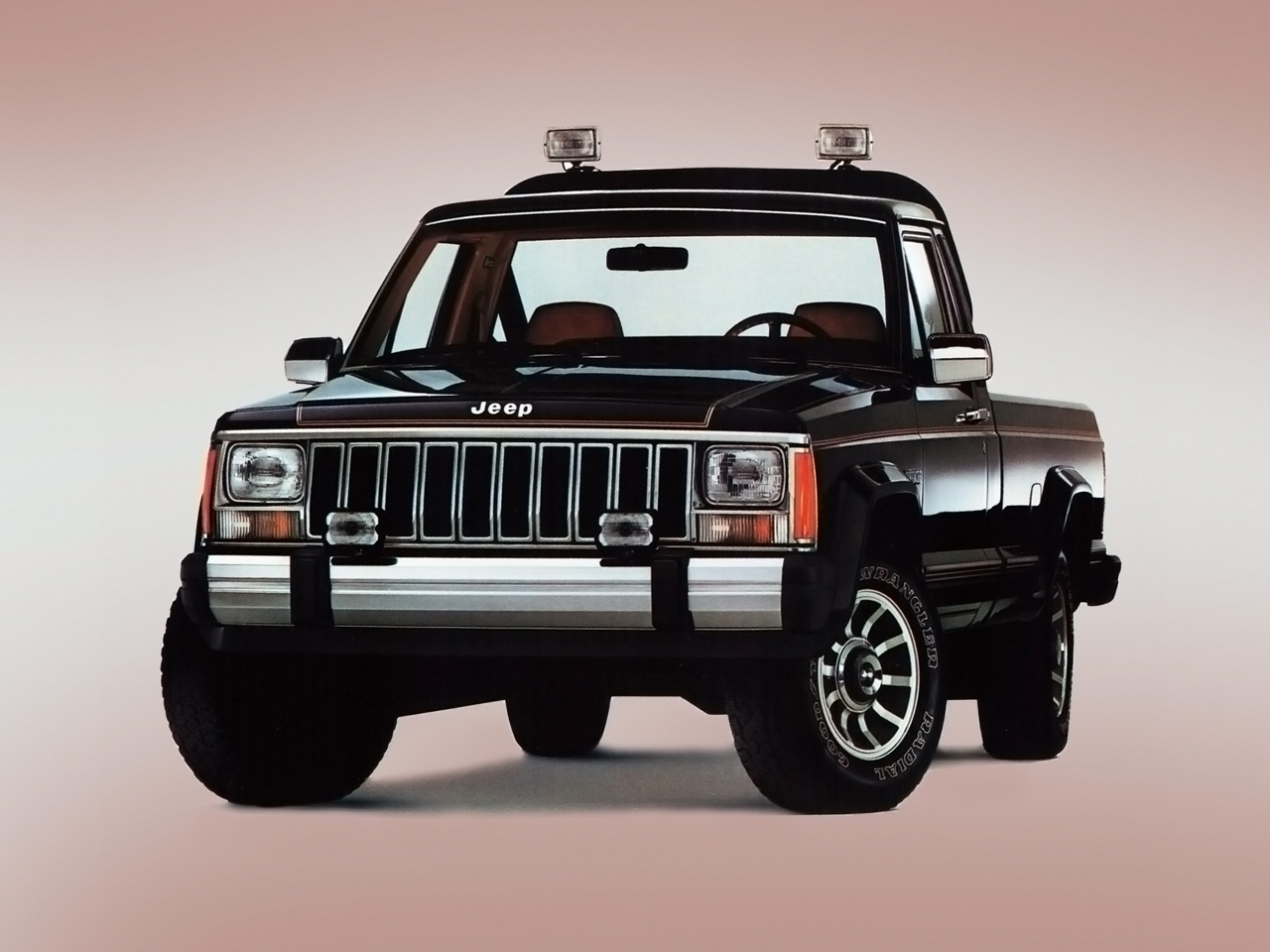Media | Articles
Will the Jeep Comanche follow in the XJ’s upward wake?
The surge of SUVs, trucks, and off-roaders has been a major phenomenon of the collector vehicle market over the last several years. Naturally, you might think a rising tide lifts all Jeeps, but the plucky Comanche pickup hasn’t experienced the boom we’ve seen amongst Gladiators, Cherokees, and Grand Wagoneers. That’s not to say, however, that the Comanche’s story is already written in stone. If we’ve learned anything about the collector vehicle market, it’s that affordable enthusiast-oriented vehicles will eventually have their day.
While the Grand Wagoneer has been on an upward valuation tear, SJ Cherokees caught fire as a result in their wake. Gladiators have appeal, but the influence of millennial buyers chiseled the XJ Cherokee into our annual Bull Market List this year. The workhorse Comanche might not reach these same heights, but the run-ups we’ve seen from its Jeep brethren might offer some insight into the pickup’s future trajectory.
Originally launched in 1986 by AMC, the Comanche came onto the scene for America’s blue-collar working man, hot on the heels of the XJ Cherokee that arrived for 1984. Many of XJ’s beloved features wisely found their way into Comanche trims as they both evolved, such as unibody construction (at least for the front half of the truck), Quadralink front suspension, Selec-Trac full-time four-wheel-drive, and powertrain options including AMC’s 2.5-liter inline-four, GM’s 2.8-liter V-6, or even an optional 2.1-liter turbodiesel from Renault. It didn’t take long until Jeep did away with the 2.8-liter, dropping in its legendary 4.0-liter straight-six in its place. Famed for reliable power, torque, and fuel economy the 4.0-liter’s unforgettable baritone exhaust was an added bonus.
While it’s tough to determine exactly how many Comanches officially came off the line, estimations indicate the total nears 200,000 trucks over seven model years (1986-’92), whereas the more popular XJs blitzed off the line at 2.9 million over 18 (’84-’01). Relatively, they’re scarce.
Marketplace
Buy and sell classics with confidence
Now, consider the recent activity surrounding a popular competitor of the Comanche’s era—the Toyota SR5. In the last few years, we’ve noticed these trusty trucks changing hands for well above expected values according to the Hagerty Price Guide. Examples of both survivor SR5s ($21,450) and full-stop SR5 restorations ($33,000.00) show that sellers do have the ability to take home hefty sums on single-cab sweethearts. The Jeep Comanche has yet to experience this same kind of love, but it arguably deserves such attention. While a breakout Comanche sale that inspires owners to shine theirs up and put out some feelers hasn’t happened yet, clean models bringing notable prices are becoming more common. Examples from Bring a Trailer show two moved in the last two months, both on the cusp and perhaps a couple features away from molting the high four-figure sales mark.
All of the Toyota SR5 hype isn’t the sole result of its supporting role in Back to the Future, either, although it is a feather in its cap. (The Comanche boasts cameo jobs including barn-burners like Redneck Zombies and Alien Space Avenger.) Pit either pickup in a ring vs the other and you’ve got yourself a pound-for-pound slugfest. Both are equally as capable and share the charm of the 1980s that’s currently so in vogue.
What’s even more fascinating about the Comanche is the flash-in-the-pan racing success it earned in the late ’80s. The most profound year was 1988, when brothers Tommy and Bobby Archer competed in the SCCA’s short-lived RaceTruck Challenge, behind the wheel of four-banger Comanches capable of turning out 110-120 horses. They posted dominant performances all year long, finishing first and third atop the standings, respectively, when the dust settled. These results were both shocking and motivating for Jeep, which then ventured into cooking up a sportier “Eliminator” trim until the models end in ’92.
Feel free to kick your feet up and enjoy some action in ’87 at Brainerd International Raceway, as the Archer brothers rip around the track, fend off “the Steves” (Saleen for Ford and Lewis for Toyota) and secure Bobby’s victory.
So what does the Comanche’s future hold? Could it wiggle its way upward into collector-vehicle status, making it more appealing for preservation and restoration? That trend continues to take shape, but the Comanche is certainly a worthy truck that we’ll be watching closely in the coming years. In a world where even the new Ford Ranger, Chevy Colorado, and Toyota Tacoma (not to mention the beefy Gladiator) are comparatively gargantuan, compact pickups with honest simplicity are at this point a dead breed. Even the Nissan Frontier, which is the living dinosaur of the modern truck market, is on the verge of evolution. More likely than not, there are enough ‘80s truck fans out there that are willing to keep some Comanche survivors alive.









20200220153526)
20200220153554)
20200220153604)
20200220160509)
20200220160225)
20200220160247)
20200220160307)
20200220160327)
20200220160346)
20200220160406)
20200220160422)
